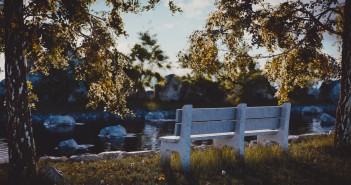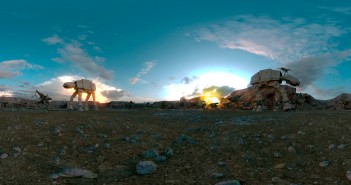Jonathan Lampel writes:
As many of you know, a vignette is a compositional tool used by artists to direct the viewer’s focus to the center of the frame by fading out the edges.
In Blender, this is most often accomplished with an ellipse mask and multiply node. This approach has a few drawbacks:
- It must be tweaked any time the image size is changed
- There is very little artistic control
- There is no way to preserve edge highlights
If we take the time to build a better vignette and group it together into one handy node as explained in the video, we can save time in the long run.





9 Comments
Looks nice
Such cool compositor or material node setups should be part of blender, as pre-set collection based upon a hall of fame. To be included as a growing collection with each version of blender, and become part of the default start scene.
Think of this one , or bpr, or rusty materials, or paint with and wear and tear, car paints, osl wood shaders, skin shaders, cotton fabric shaders. various metals,
I agree 100%, its stupid that everyone needs to keep their own library of cool things of all kind of nodes. This includes material and compositing nodes, but in future there should be node systems for particles and other things too and we really need good presets to get doing cool things easier and faster.
I agree 100 %
Nice tutorial, not that many good tutorials in Blender community.
The quality of BlenderGuru, BlenderCookie and others is going down, so it's nice to see some good ones without mistakes.
Great tip, but in the video multiply node is done wrong. It should be image in upper slot and vignetting image in second. It seems to be right in the screenshots and file though
If it's a multiply node, does it really matter which way around the inputs are?
It does matter, it darkens upper image with the lower image and factor says by how much
Hey Jonathan, that's a really nice one...
However, instead of using a flipped ColorRamp you might just use an Invert Node.
And I wonder, if there's a possibility without using this Lens Distortion node, that might be great. I just feel like "that Lens Distortion shouldn't be used for such a purpose...". I think, a Lens Distortion is too much calculation happening for only getting a black and white mask out. Others use a Less Than Node (with a second Value of 1.0) to get the "rounded corner"-effect... I think, your White-mixing before is way better.
But thanks a lot for your well explained Tutorial. Great Job.
Hi , great tutorial, I learned something so thanks ! A tip : you can also set the minvalue and maxvalue of a group input value in the properties, also a default value is usefull to have a quick start.
Hope to help.